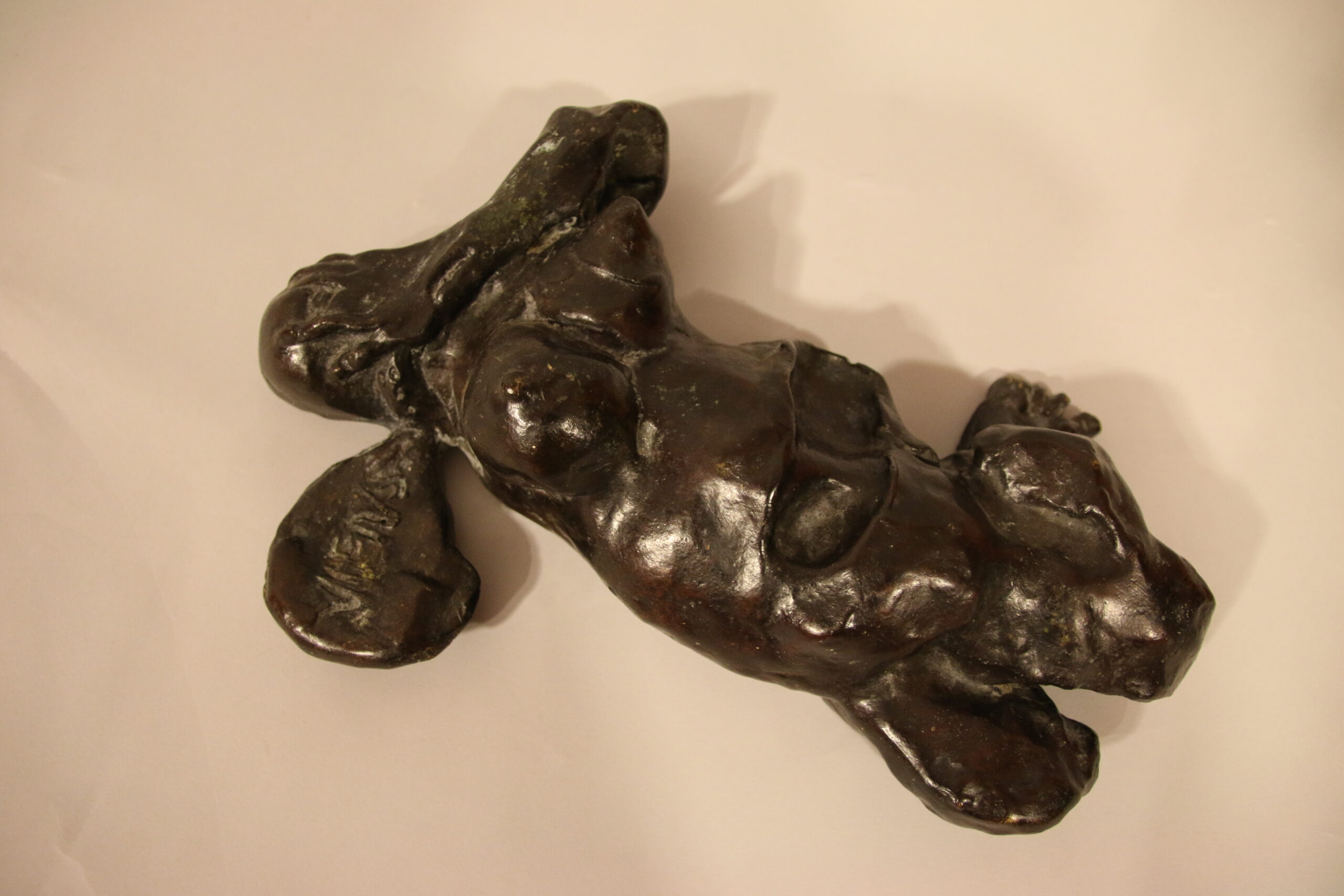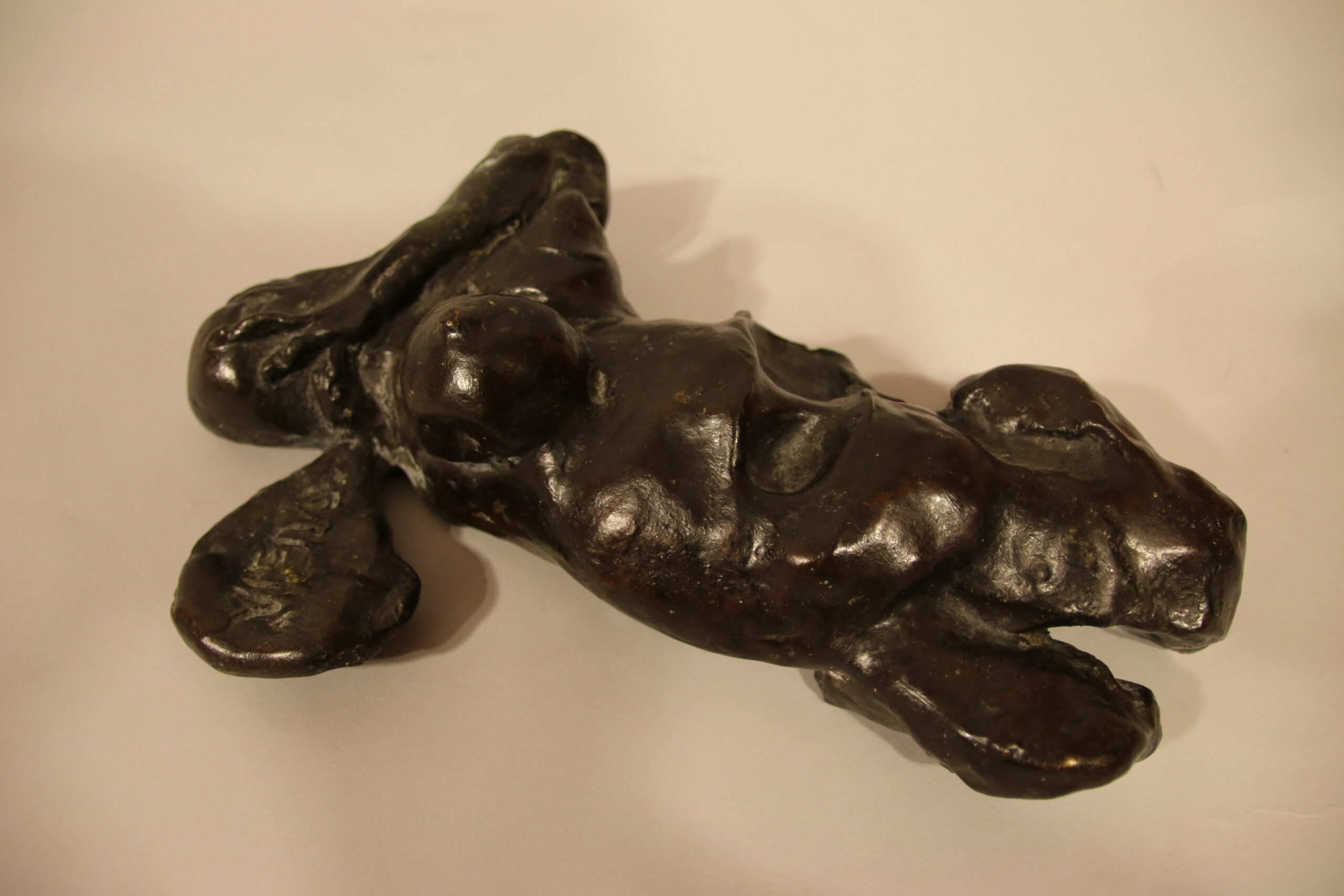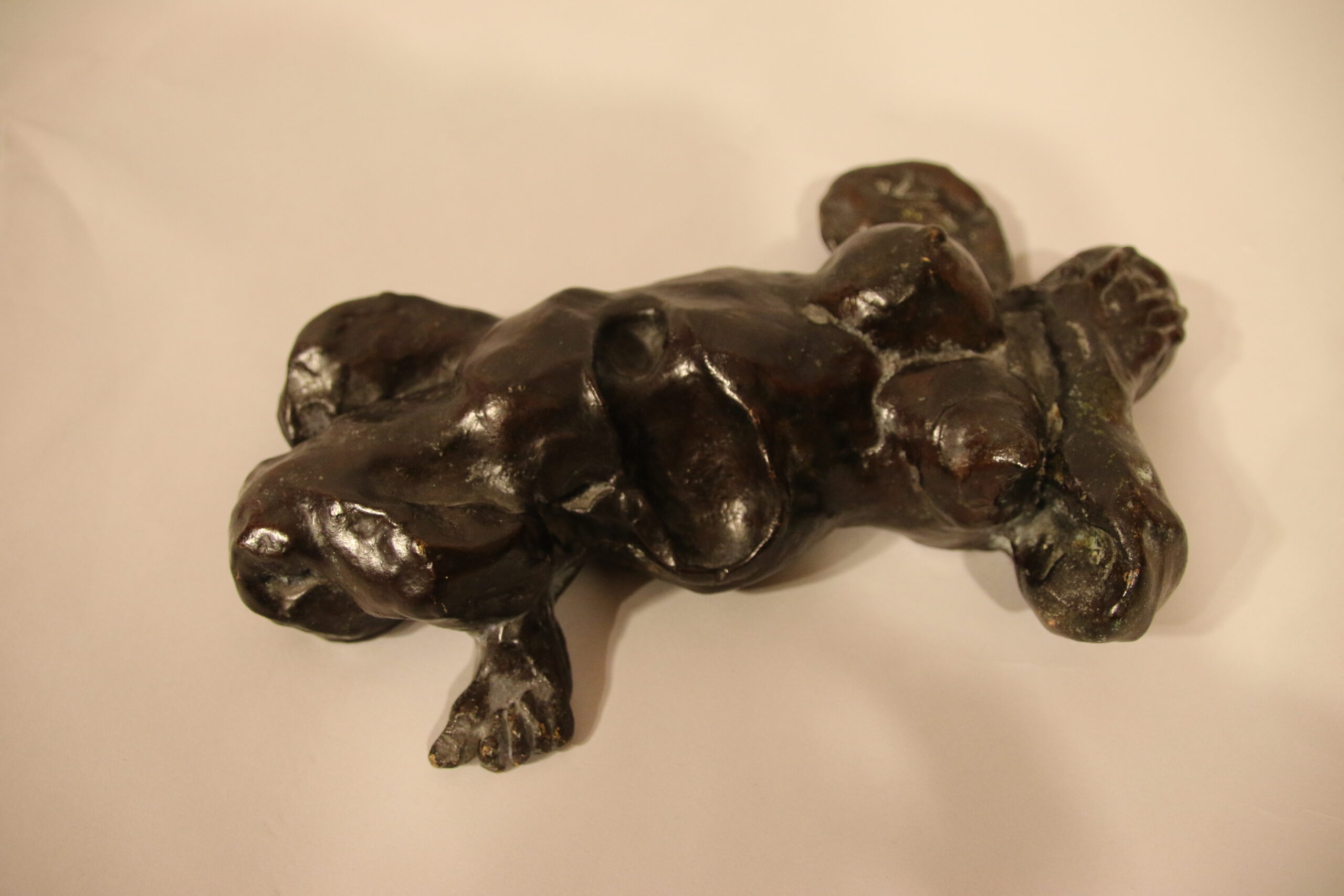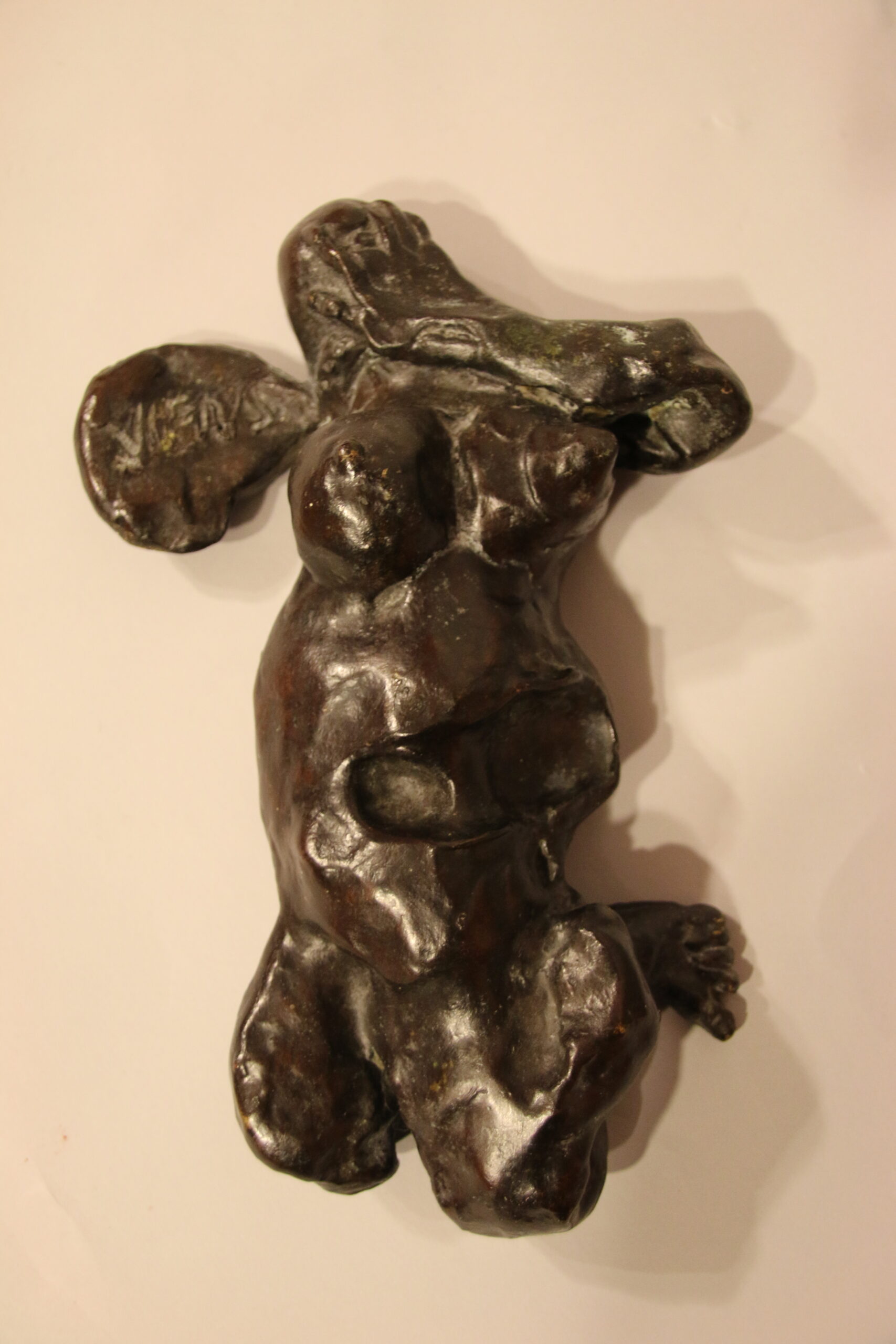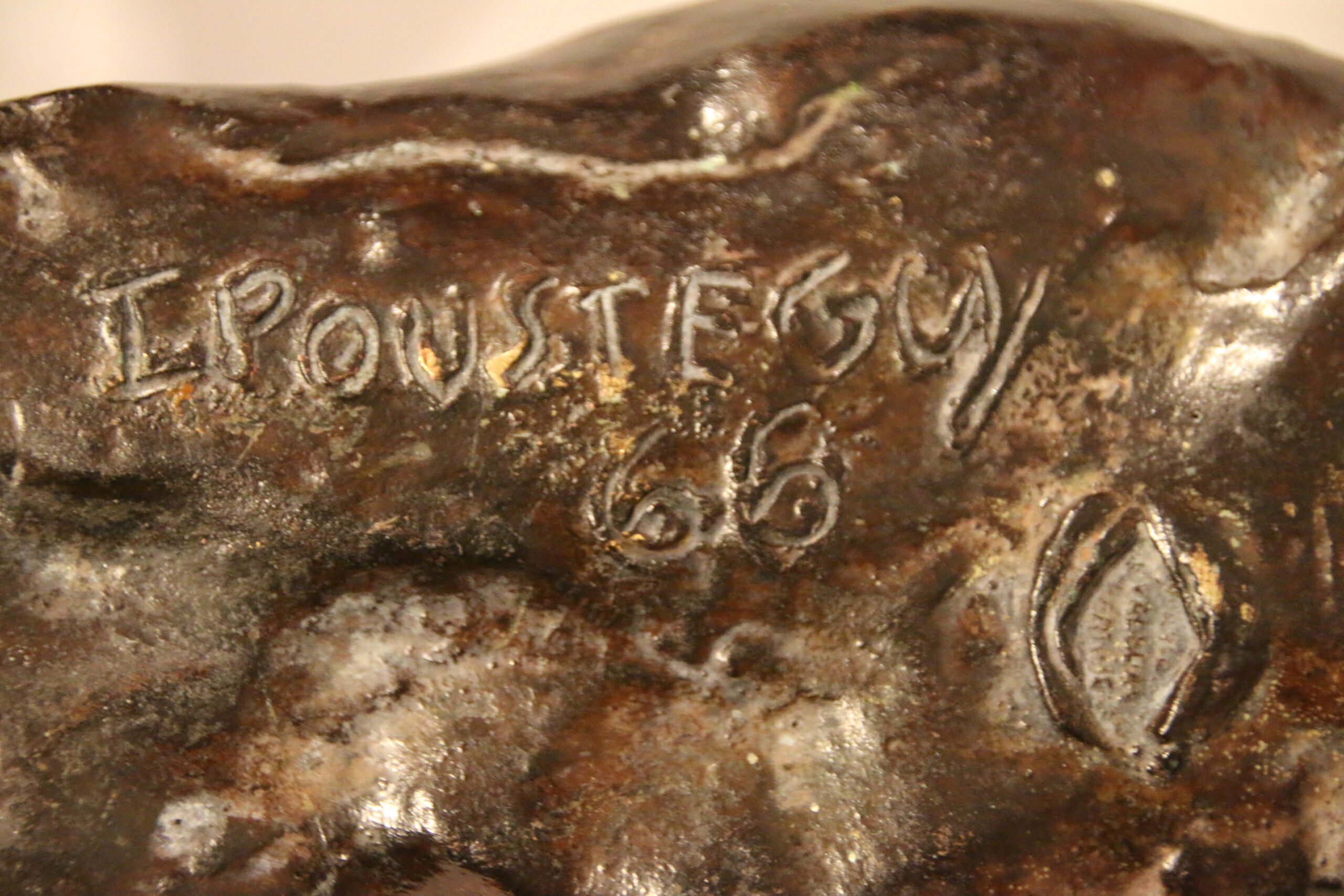Description
Jean Robert, known as Ipoustéguy is one of the major sculptors of the second half of the 20th century. Born in 1920 in Dun-sur-Meuse (Lorraine), he died in his hometown in 2006.
Solitary, he did not follow, nor initiate, any current, any school. The Robert of proper names presents it as a “baroque and hallucinatory realism”.
An insatiable worker, he produced 600 sculptures, hundreds of watercolours, drawings and paintings. For many, his monumental works can be seen around the world in the greatest public collections.
Fiercely independent, he paid the price for it all his life… and beyond: too absent from reference works, he still has not received the public homage he deserves. Admired, controversial; upsetting or disturbing. Ipoustéguy leaves no one indifferent: the public in general, whom he knows how to touch with his universal themes. Intellectuals or artists, by its expressive power.
The famous American novelist John Updike said of Ipoustéguy in 1989, in his book Un simple regard, that Ipoustéguy was “the greatest living French sculptor”.
1953
Installed in his studio in Choisy-le-Roi since 1949, Ipoustéguy abandoned painting to devote himself entirely to sculpture. However, he will continue drawing, watercolor and writing. And this, despite the warning of the merchant Kahnweiler who had appreciated his pictorial work: “Remember that you will become a sculptor at your own risk and peril”.
1962
Decisive trip to Greece. The human body becomes the main subject of his sculpture. He has been at the Galerie Claude Bernard for 2 years and will remain there until 1982.
1964
He won the Bright Prize at the 32nd Venice Biennale.
1971
First public commission, L’Homme forcing unity.
This monumental sculpture is installed in front of the Paul-Langevin Institute (CNE) in Grenoble.
1978
Ipoustéguy retrospective at the National Foundation for Graphic and Plastic Arts in Paris. The event is widely hailed by the press.
1979
Ipoustéguy installs The Man Built His City in front of the Berlin Congress Center. It is considered the largest sculpture ever made by a single man. The same year, a major retrospective was organized at the Kunsthalle in Berlin.
1980
Ipoustéguy designs four monumental ensembles for Place Louis Pradel in Lyon. In the center, the figure of Louise Labé. From that moment on, Ipoustéguy intimately mixes the shadow of the subject with the sculpted subject in his work.
1984
Ipoustéguy carries out an order from the President of the Republic, Rimbaud. It will be The Man with Soles in front.
Installed in 1988, its aesthetic bias will be strongly criticized. The same year, he received the insignia of Chevalier de la Légion d’honneur.
1991
New retrospective at the Kunsthalle in Berlin.
1999
Retrospective at Chelsea Harbour, London.
2001
Publication of the catalog raisonné of the artist by Éditions la Différence. Inauguration of the Ipoustéguy Cultural Center in Dun-sur-Meuse. The artist deposits dozens of works there.
2003
Ipoustéguy returns to his native land, settling a few hundred meters from the house where he was born and the center that bears his name. He received the Del Ducas prize at the Academy of Fine Arts (Institut de France).
2006
Death of the artist. He is buried in the Cimetière Montparnasse, in Paris.
2008
Major exhibition at Palazzo Perego in Legnano and in Milan.

